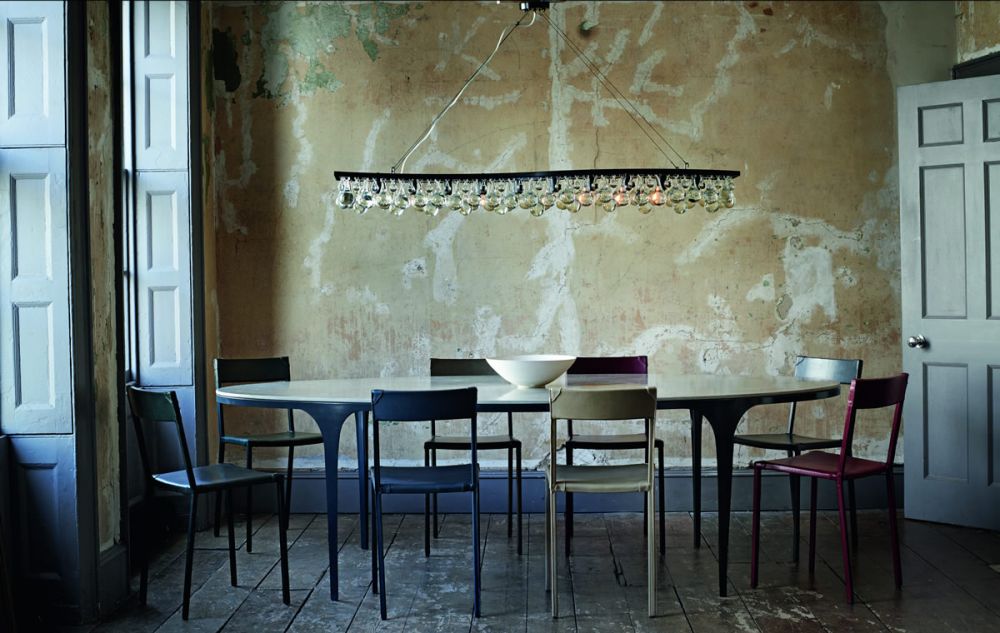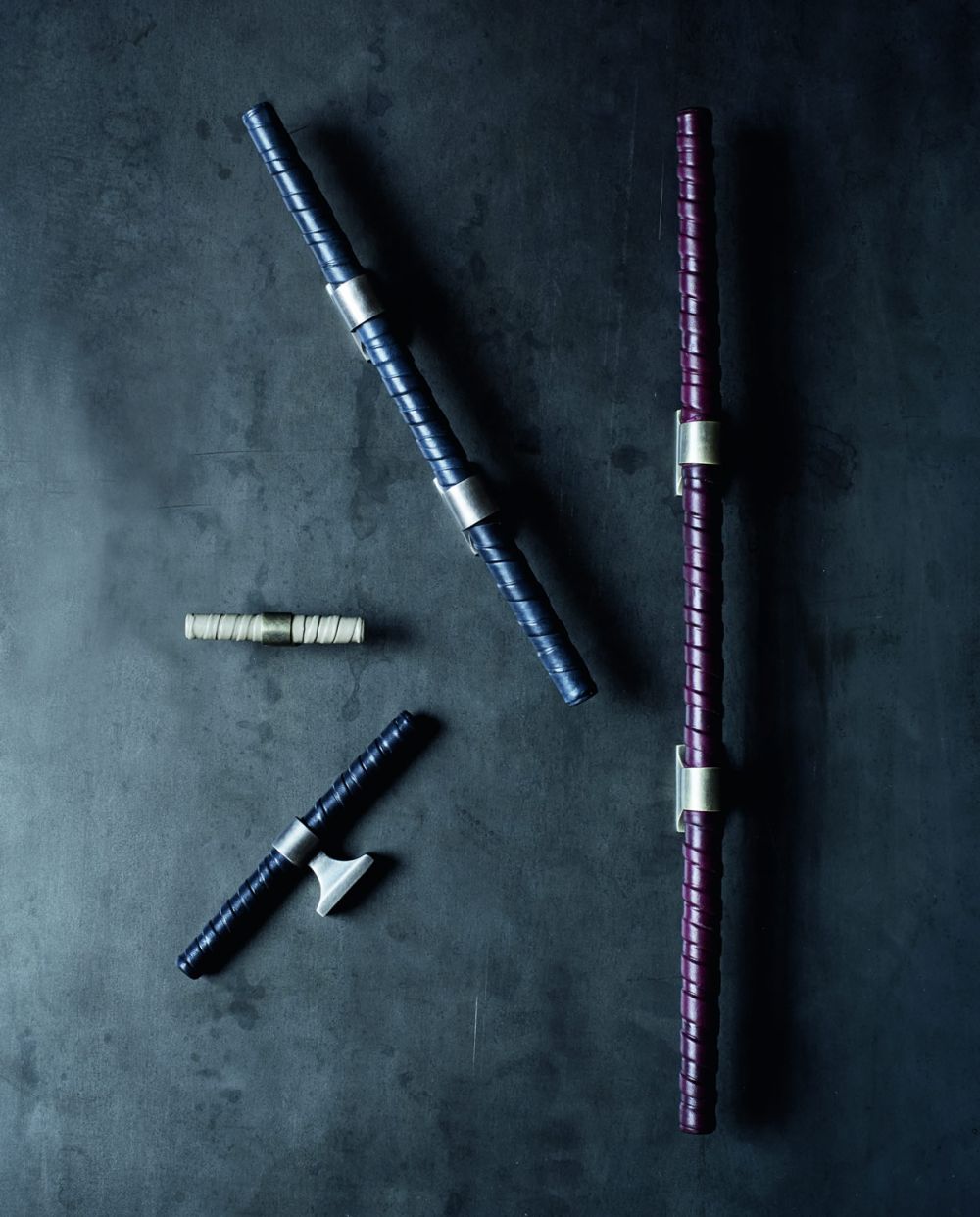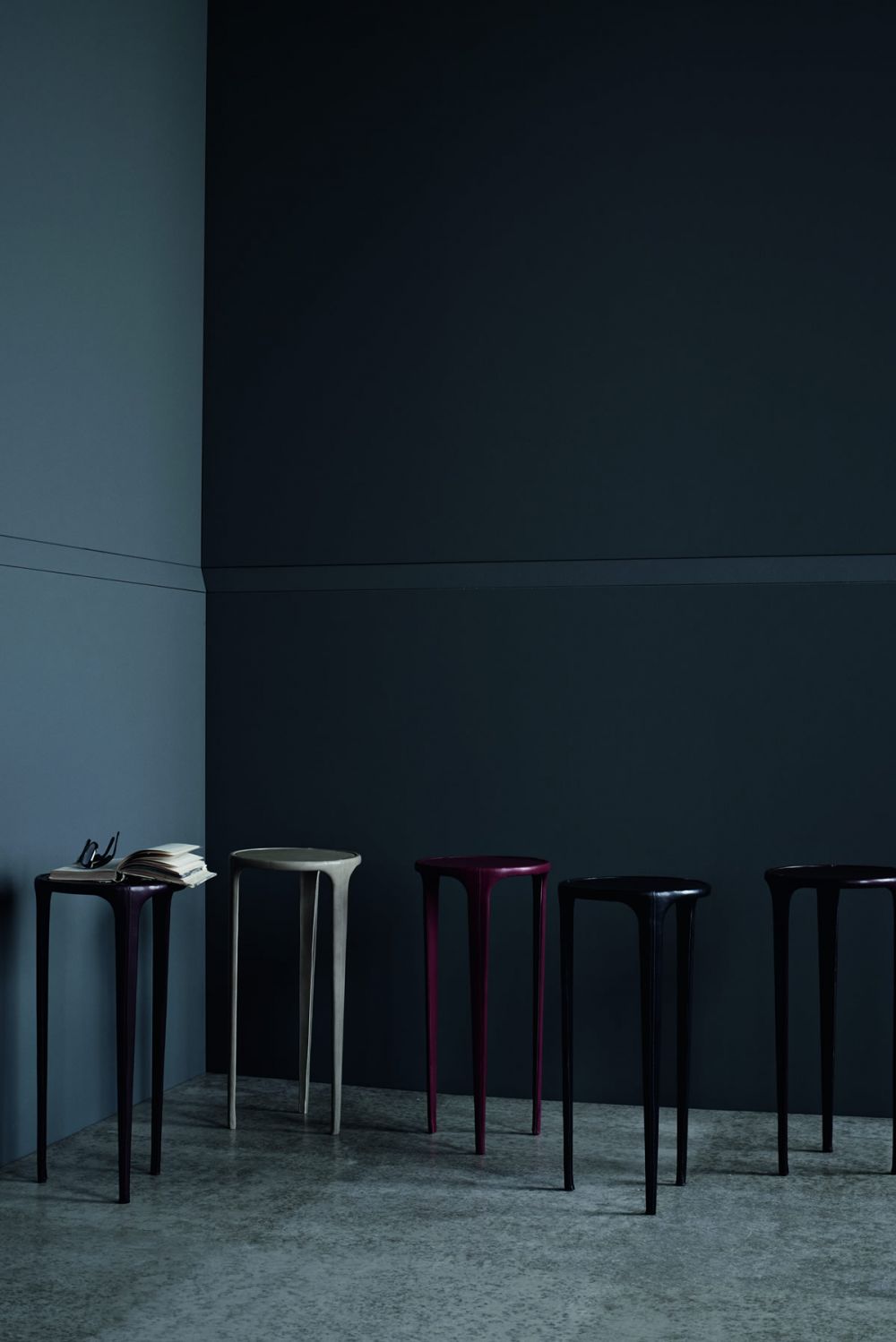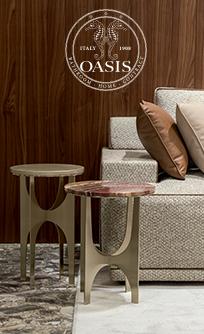Leather is such an ancient durable material that has been used in interiors going way back to caveman days. It’s basic, primal and pure. It can be tough yet fragile, soft yet strong and incredibly versatile.
We have been working with leather, in all its variations from the very early days at Ochre. It all started with our love of colour. That was the initial inspiration. Creating a range of incredibly simple stools in different subtle colours of nubuck that were playful and worked well together. We have learnt a lot since, but colour and leather is still our passion and this combination is a strong trend in interior design.
As we are noticing the return of comfort in the home, leather is welcome as it’s a sensual material that appeals to the senses on so many different levels: On the eye and on the nose. Its evocative smell makes homes feel loved and inspired the first ever Hermès perfume, Eau d’Hermès. On the touch and even on the ear, with that deliciously comforting squeaky sound only leather can make. Leather’s beauty just increases with age, the splashes, the spills, and the repeated touches in specific areas that become darker or shinier with time are part of its charm and tell a story about its life. It ages gracefully like an old friend.
Its patina and colour changes depending how and where it is being used. Leather can take colour well, which is why it’s a material of choice for interior designers and an alluring trend. It does have a very strong memory though and some colours fade with time and some colours darken with time. This is the charm of leather, it carries a story and has provenance.
After decades of black and brown leather, which is safe, colour is back and is spilling over to larger pieces of furniture. Colour is suddenly everywhere and having leathers dyed in a range of new beautiful shades opens up how designers can use this material in all styles of interiors.
The blue-grey palette works together so you can have a family of dining chairs in the ever-changing colours of the sea and the sky. Even the colour of stitching leather can be fun. A red thread on a simple brown leather piece can make a discreet but beautiful detail statement. Or you can add a dash of interest with a natural brighter yellow or rich deep red. Play with the colour changes is what we are saying. Be brave. Have a flash amongst the subtle. It will work.
Different textures work together, from wrapping to stitching or a mixture of the two. Designers are exploring leather techniques - wrapping, stitching, stretching, punching, laser cutting. It’s terribly exciting. A wrapped leather chair where the material is wrapped tightly around a frame is a smart design trend. Hand stitching is no longer the preserve of handbags or saddles. Leather furniture with hand sewn pinched seams and scalloped corner details is stunning and gives leather in interiors a couture look. All this takes time, as it is a complete manual process, resulting in a contemporary piece of craft that you can use everyday and keep for a lifetime.
Luxury is one of the key words of our time and drives the design world. The other word used more and more today is artisan. Fine Leather is perceived as a luxury market. It is because it takes incredible craftsmanship to execute such work with this material. In the hands of a master craftsman leather can create works of extraordinary beauty.
Bill Amberg is one of the most notable leather pioneers, using leather in its purest form and taking it in different directions. He made people sit up and think. This material is cool. This is a beautiful material.
Sigmar captures the trend for retro leather with modern pieces from the 19th century onwards and has stunning leather chairs from Denmark in cognac coloured leather that only get better with age. This is a long lasting and a very versatile material. Let's embrace it.
There are huge possibilities for decorative leather too. Eponymous label Helen Amy Murray’s hand sculpted leather and textiles that are sought by interior designers, architects and collectors globally, to create arresting works of art for interiors, furniture and installations. She combines the old and new design trend – the traditional cutwork with contemporary techniques to sculpt her designs giving the flat leather surface a carved, layered aesthetic.
Leather’s variations create depth to decorating schemes. We have noticed interior designers combining the contrasting textures of coloured wrapped leather with softer nubuck. They works so well together. The options are endless. Where to begin and where to end. That is the Question
Leather furniture can sit beautifully on a wooden, carpeted or concrete floor, against a stone, painted or brick wall. It’s a timeless material that just seems to sing in its surroundings.







